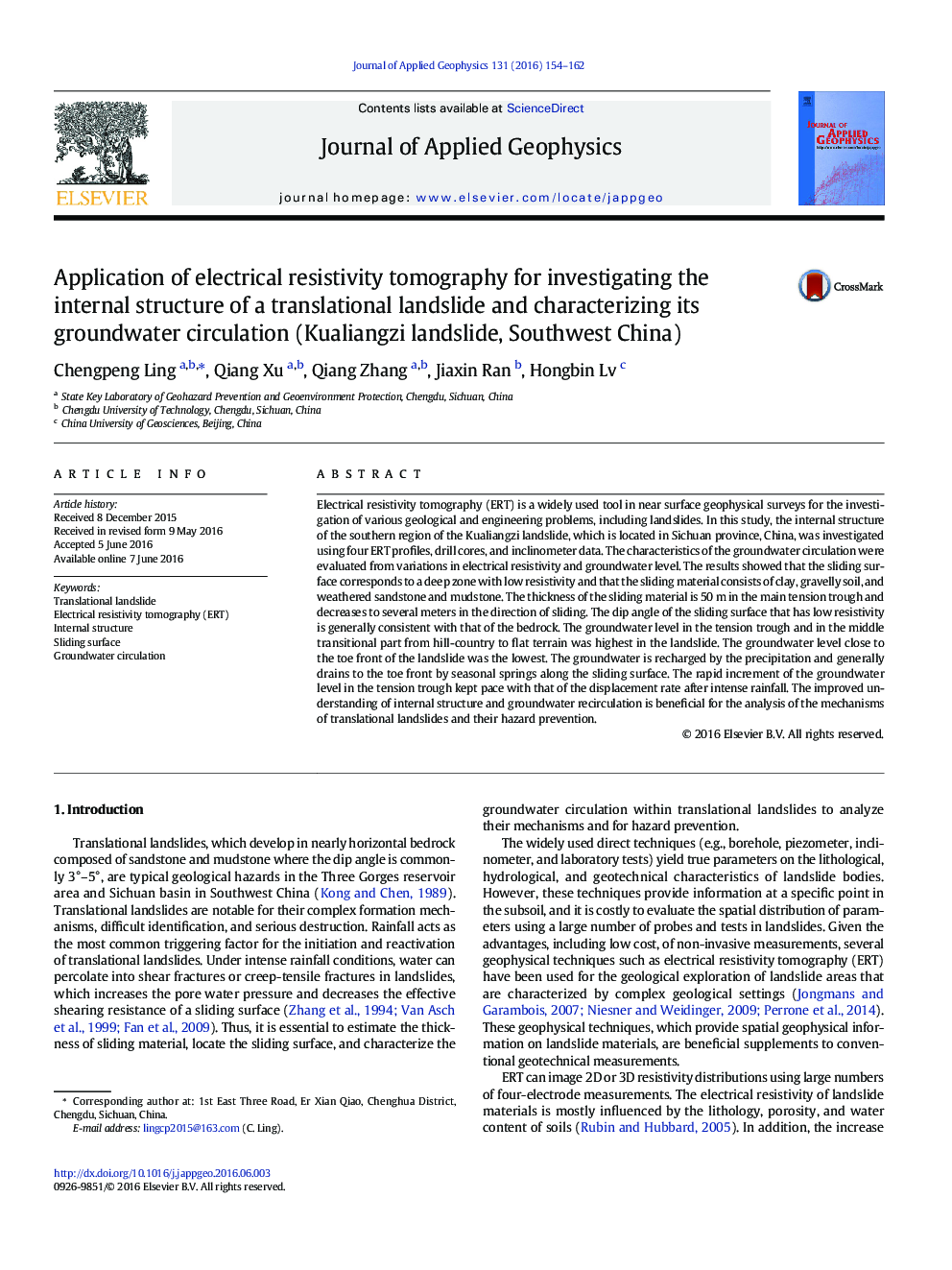| کد مقاله | کد نشریه | سال انتشار | مقاله انگلیسی | نسخه تمام متن |
|---|---|---|---|---|
| 4739737 | 1641120 | 2016 | 9 صفحه PDF | دانلود رایگان |
• The sliding surface was located in a deep zone with low resistivity that corresponded to weathered sandstone and mudstone.
• The groundwater is recharged by precipitation and generally drains to the toe front by springs along the sliding surface.
• The large increment in groundwater level in the tension trough kept pace with that of the displacement rate after rainfall.
Electrical resistivity tomography (ERT) is a widely used tool in near surface geophysical surveys for the investigation of various geological and engineering problems, including landslides. In this study, the internal structure of the southern region of the Kualiangzi landslide, which is located in Sichuan province, China, was investigated using four ERT profiles, drill cores, and inclinometer data. The characteristics of the groundwater circulation were evaluated from variations in electrical resistivity and groundwater level. The results showed that the sliding surface corresponds to a deep zone with low resistivity and that the sliding material consists of clay, gravelly soil, and weathered sandstone and mudstone. The thickness of the sliding material is 50 m in the main tension trough and decreases to several meters in the direction of sliding. The dip angle of the sliding surface that has low resistivity is generally consistent with that of the bedrock. The groundwater level in the tension trough and in the middle transitional part from hill-country to flat terrain was highest in the landslide. The groundwater level close to the toe front of the landslide was the lowest. The groundwater is recharged by the precipitation and generally drains to the toe front by seasonal springs along the sliding surface. The rapid increment of the groundwater level in the tension trough kept pace with that of the displacement rate after intense rainfall. The improved understanding of internal structure and groundwater recirculation is beneficial for the analysis of the mechanisms of translational landslides and their hazard prevention.
Journal: Journal of Applied Geophysics - Volume 131, August 2016, Pages 154–162
